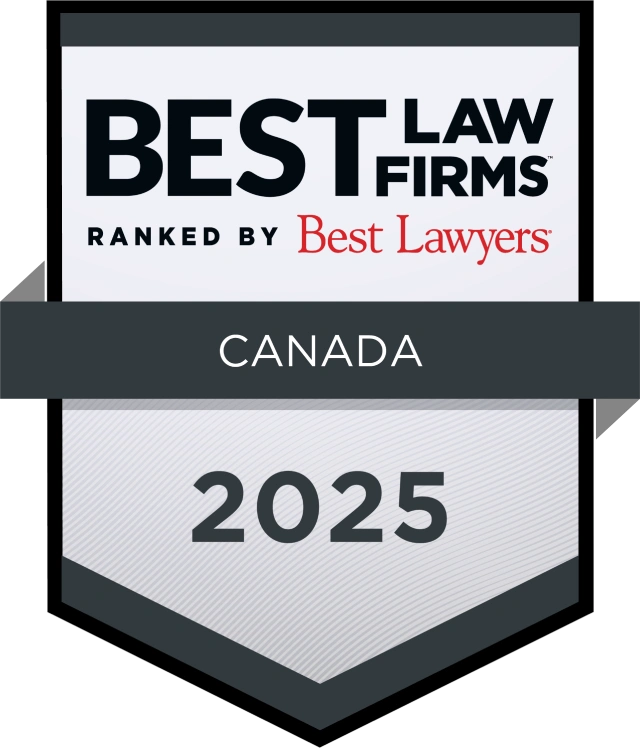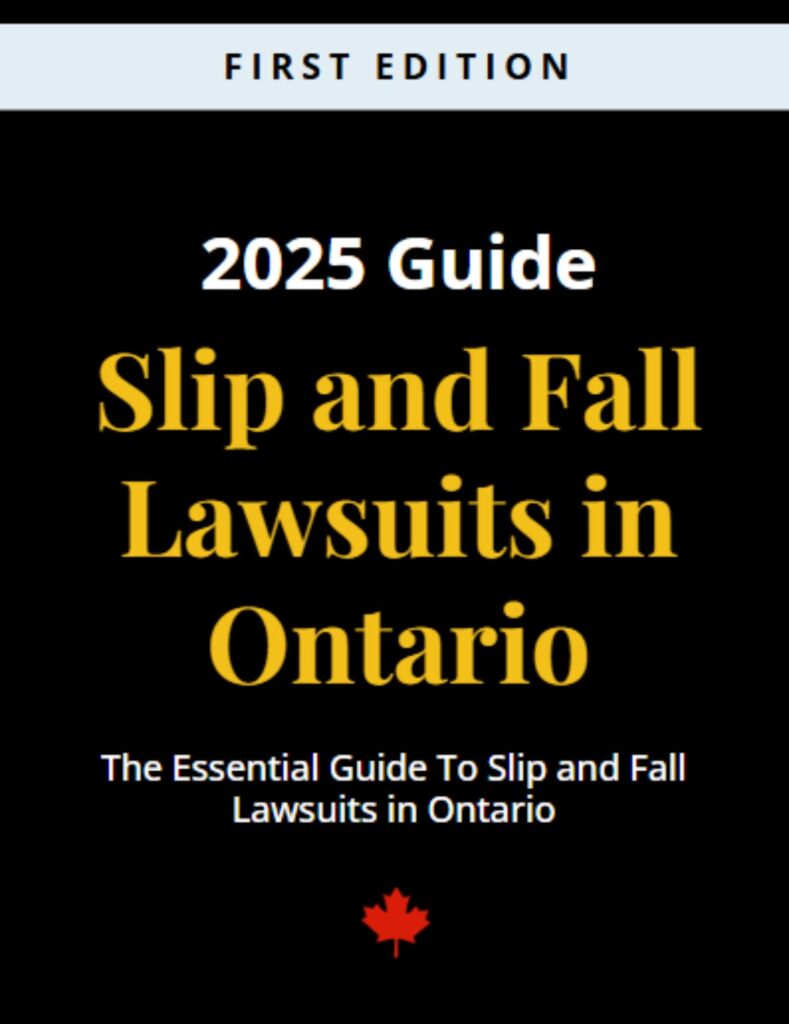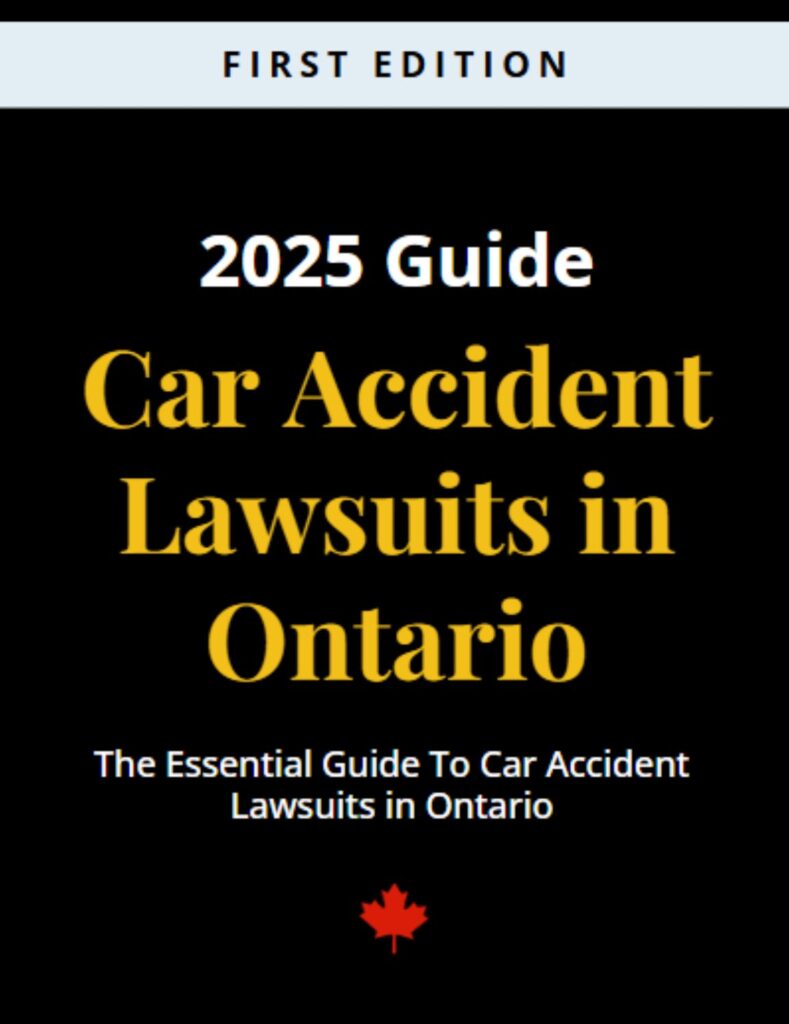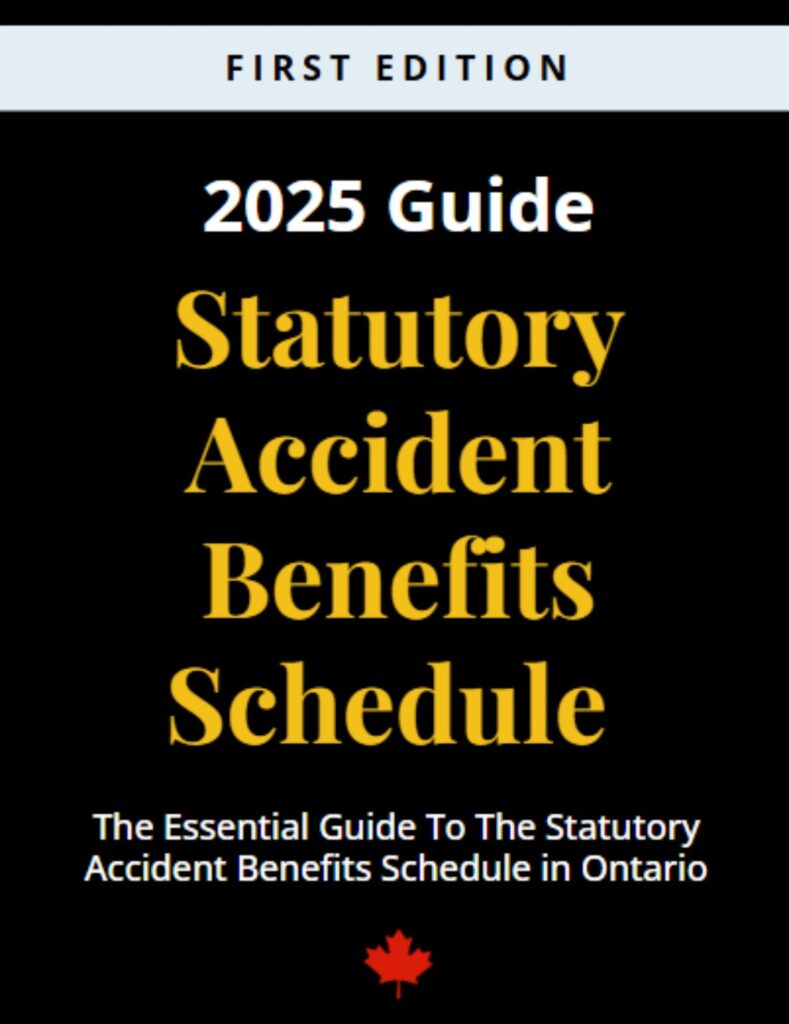Thunder Bay Torn Ligaments Lawyer
Find out if you have a case today.
Contact our Thunder Bay personal injury lawyers for a free consultation if you have legal questions regarding your personal injury claim.
Table of Contents
When a car accident occurs, some of the most common injuries that result from the accident are broken bones, torn ligaments and tendons, and damage to joints. While these injuries may seem pretty straightforward, they are actually some of the most complicated injuries to diagnose and treat. Unfortunately, these injuries are not always possible to detect immediately after an accident. The pain, stiffness, and decreased mobility can sometimes take months to appear.
Soft tissue injuries can be just as serious as a bone that is obviously broken, even if you cannot see it. Some of these injuries are even difficult to pick up on an x-ray or CT scan. That is why it is imperative that you consult with an experienced physician as quickly as possible if you believe you are suffering from one of these injuries.
While some soft tissue injuries are minor, others can have Long-Term, even life-long, consequences. These injuries can be classified as catastrophic and will likely entitle you to compensation from the at-fault party. An experienced Thunder Bay torn ligament and tendon lawyer can help you understand your legal options.
The Basics Of Soft Tissue Injuries
Soft tissue, in anatomical terms, is referring to the muscles, tendons, and ligaments of the body. There are some 650 muscles in our bodies and each of them is attached to at least one bone by a tendon. Ligaments are another type of fibrous tissue, much like tendons, only they connect bones to one another and to pieces of cartilage. Together with our bones, ligaments, and tendons give our bodies shape and help us move.
Unfortunately, when a car accident occurs, or another type of severe collision or impact, tendons, muscles, and ligaments can suffer damage. These soft tissues can be stretched and in severe cases, torn. These incidents result in the following types of soft tissue injuries:
- Sprain – A sprain is a minor tear or stretch in a ligament.
- Strain – A strain is a minor tear or stretch to a tendon or muscle.
- Tears – A tear involves the partial or complete rupture of a ligament, muscle, or tendon.
In addition to the types of injuries, each of these soft tissue injuries is graded on a scale that ranges from a Grade I to a Grade III injury with a Grade III being the most severe soft tissue injury.
- Grade I – A minor tear, strain, or sprain that results in very little or no joint instability is considered a Grade I injury. These injuries will typically heal by themselves within a week or two.
- Grade II – This is a partial tear injury that causes some instability in the joint. Many of these injuries will also heal on their own if given proper rest, although a few of them may require surgery to be repaired.
- Grade III – Complete tears of the muscle, ligament, or tendon are considered Grade III injuries and will almost always require surgery to completely heal. These injuries often feel as if the bone has been broken due to the amount of pain they cause and because the injured person is unable to use the limb or joint that is affected.
In addition to the above types of injuries, there is a type of fracture that occurs that involves soft tissues including ligaments, bones, tendons, and muscles. It is called an avulsion fracture. Avulsion fractures occur when a ligament or tendon pulls away from the bone, but some of the bone stays attached to the fibers of the soft tissue. These injuries are common in younger people who tend to have weaker bones that are more likely to split away from the muscle in this manner.
Treatment for avulsion fractures is similar to a muscle sprain. Many, but not all, of these fractures, will heal on their own with rest, ice, and a few simple stretching exercises. However, if the ligament has moved too far from the bone to fuse back on its own, surgery may be required to help the injury heal.
LET US PUT OUR EXPERTISE TO WORK FOR YOU
Tell Us What Happened
Since 1959, we’ve helped thousands of Canadians get the compensation they deserve with their personal injury claims. One of Canada’s oldest personal injury law firms, personal injury law is exclusively what we do. Book a free consultation today with our top-rated personal injury lawyers.
Our team is available 24/7 to speak with you.

Understanding Catastrophic Injuries
We mentioned above that soft tissue injuries can sometimes be considered catastrophic. The first thing that you need to know is what exactly a catastrophic injury is. A catastrophic injury is one that has the potential to cause permanent or Long-Term effects on the injured person. In most situations, a Grade I soft tissue injury would not be considered catastrophic. However, Grade II injuries that are more severe, and many Grade III soft tissue injuries have the potential to cause Long-Term effects, and because of this, some of these injuries may be considered catastrophic. Potential Long-Term or permanent effects of Grade II or Grade III soft tissue injuries include, but are not limited to, the following:
- Chronic pain
- Chronic numbness
- Limited muscle strength
- Limited mobility
- Loss of function
Because soft tissue injuries will always require medical treatment, if you think that you may have suffered a Grade II or Grade III soft tissue injury, it is vital that you seek treatment from a medical professional as quickly as possible. Getting treatment quickly may help reduce any Long-Term effects your injury may cause. Signs that you may have suffered a soft tissue injury include, but are not limited to, the following:
- You cannot move the joint that is affected or cannot put any weight on the affected limb
- You have pins and needles sensations or numbness at the location of the injury
- You have severe pain around a joint structure or bone
- The part of your body where you believe you are injured does not seem to be shaped correctly
- You heard a cracking or popping sound when you were injured
Call Preszler Injury Lawyers Today
If you have suffered severe soft tissue injuries due to the negligence of another person, you may be entitled to compensation for your damages including lost wages, medical expenses, pain and suffering and more. The experienced lawyers at Preszler Injury Lawyers will discuss the circumstances of your case with you and advise you of your legal options. Contact us today to schedule a consultation.
Do you live in Thunder Bay? Here’s how we can help:
Proudly Canadian
Award Winning Personal Injury Law Firm
We are proud to be one of Canada’s oldest and long-standing personal injury law firms. Since 1959, we have been providing exceptional legal services and have established ourselves as leading personal injury lawyers in the Canadian legal community. It’s not just the awards that recognize our achievements, but also the wins we’ve achieved for thousands of Canadians with their personal injury claims.



More personal injury Topics
Here’s more information on personal injury related topics that we think you might find helpful.

personal injury
|
January 23, 2024
Injured as a Worker in Ontario? A WSIB Claim Isn’t Necessarily Your Best— Or Only— Option
In Ontario, the compensation of workers who sustain injuries or illnesses in the course of their employment is governed by the Workplace Safety and Insurance…

personal injury
|
December 7, 2023
Does a Child Have the Right to Sue for Personal Injury?
As much as parents and guardians do everything they can to keep children safe and protected from dangerous situations, there are occasions when a child…

personal injury
|
October 10, 2023
Gain Peace of Mind Through a Structured Settlement
The phrase “structure binds anxiety” is often used by psychologists to help people suffering from anxious feelings and intrusive thoughts. This maxim’s aim is to…
More personal injury Video Resources
We also have some videos on the topic of personal injury claims
personal injury FAQs
Here are some commonly asked questions for personal injury claims
What does a lawsuit look like?
Every personal injury lawsuit is generally comprised of five main parts. The length of time each part takes can vary depending on the complexity of your case. Your lawyer will help you through each stage by providing tailored advice and strong legal representation.
You can expect:
- Statement of Claim: This is a formal document that initiates the personal injury claim against the at-fault party (or individual you are suing).
- Examination for Discovery: This is a meeting where you and your lawyer will ask the opposing party questions about the claim, the accident, fault, and anything else that is deemed relevant. The opposing party will also have the opportunity to ask you questions.
- Gathering of Evidence: Your legal team will gather a variety of evidence on your behalf to strengthen your claim. This might include medical records, police reports, images from the accident scene, witness testimony, expert opinions, and more.
- Mediation: If you would like to attempt to settle without going to trial, you will likely undertake mediation. Mediation involves you and the opposing party negotiating the terms of your settlement with the assistance of a neutral third party.
- Trial: If you are unable to reach a settlement during mediation, your claim will proceed to trial. During trial, your lawyer will present your case and the evidence they have gathered before a judge (and sometimes a jury). Once complete, the judge will decide the final amount of compensation you’re entitled to.
It’s important to note that a majority of personal injury claims are settled through mediation, out of court. Our Toronto personal injury lawyers help guide clients through each of these stages, so they don’t have to navigate the legal complexities alone.
How much will I have to pay for lawyers’ fees?
Our personal injury lawyers work on a contingency-fee basis, meaning we only get paid if you win your case. A percentage of the settlement you receive will go towards lawyers’ fees. There are no upfront, out-of-pocket payments required.
What type of compensation can I expect to get?
When you’re injured in an accident due to someone else’s negligence, there are many different types of compensation you may be eligible to receive. The amount and kind will depend on the severity of your injury and the specifics of your case.
Common damages you might claim include:
- Pain and suffering
- Out-of-pocket expenses
- Loss of income
- Housekeeping losses
- Medical costs
- Legal costs
- And more
Our experienced Toronto personal injury attorneys will help maximize what you can recover by exploring your case and eligibility in depth. We aim to ensure that the compensation you receive reflects not only your current suffering, but the lifelong effects that your accident may have in the future.
When can I sue for non-pecuniary general damages (e.g. pain and suffering, loss of enjoyment of life, etc.)?
In Ontario, you can sue for non-pecuniary damages if you have suffered a permanent and serious impairment of an important physical, mental, or psychological function, or permanent, serious disfigurement. This is known as the “threshold.” If you meet this threshold, you can sue for general damages such as pain and suffering, loss of enjoyment of life, and other similar losses.
How long will it take to settle my case?
The length of time it takes to settle a case depends on several factors, including the complexity of the case, the extent of your injuries, and whether the other parties involved are willing to settle. Some cases can be settled in a few months, while others can take years.
How long will the process take?
The length of time a personal injury claim can take varies widely according to the specifics of your case. While some cases settle in a matter of months, some can take anywhere from two to four years.
Some factors that affect the duration of personal injury claims include:
- Complexity of your injuries
- Each party’s willingness to settle
- Whether a claim goes to court
- Insurance company cooperation
- Availability of evidence
- And more
When liability is clear or injuries/damages are more clearly documented, cases may move faster. A personal injury lawyer will make sure the process keeps moving, although sometimes delays (like court backlogs) are unavoidable. Seeking personal injury legal advice early may help you streamline your timeline.
How long do I have to sue?
In Ontario, generally speaking you have two years from the date of your injury-causing accident to file a claim. However, based on the circumstances of your individual case, this timeline could be subject to additional limitations.
Do I have a strong case?
After taking advantage of a free initial consultation with our personal injury lawyers, the strength of your case can be evaluated based on the evidence available and the specific circumstances of your accident. Our personal injury lawyers offer case-specific legal feedback to help you understand the strengths and weaknesses of your case and advise you on legal options that might be available.
Got more questions?
If you have more questions or need legal help regarding personal injury claims, contact our legal team for help.
We’re happy to help.
INJURED IN AN ACCIDENT IN Thunder Bay?
Book a FREE Consultation
With Our Legal Team Today
Our phone lines are available 24/7
During your free consultation you will find out if you have a case worth pursuing as well as answers to any legal questions you may have.



